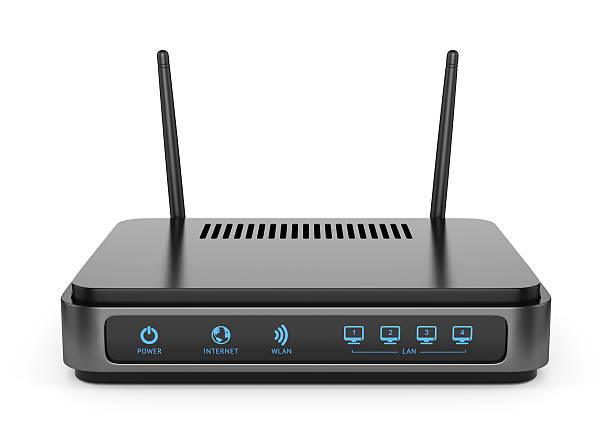In today’s connected world, where seamless internet access is as vital as electricity, nothing frustrates more than a slow or unreliable connection. It’s easy to blame your Internet Service Provider (ISP) when things go awry, but did you know that many connectivity problems can be resolved by simply resetting your modem and router? This process can act like a magic wand, solving issues that might otherwise seem insurmountable. Learning how to reset modem and router is an essential skill that can save you time, money, and a whole lot of frustration. Let’s dive into this step-by-step guide.

Signs You Need to Reset Your Modem and Router
Before we jump into the how-to, it’s crucial to understand when a reset is actually necessary. It’s like knowing when your car needs an oil change – timing is everything.
1.Slow Internet Speeds: One of the first signs that you might need to reset your modem and router is noticeably slower internet speeds. If your pages are loading at a snail’s pace or streaming services buffer endlessly, it’s time to consider a reset.
2.Intermittent Connectivity: If your internet connection is dropping in and out, or if certain devices in your home are struggling to stay connected, this could be a sign that a reset is needed. Inconsistent connections can be caused by your devices losing sync with your network, something a reset can often fix.
3.Unresponsive Devices: Sometimes, your modem or router may stop responding altogether. This can manifest as the inability to access the internet, even though everything appears to be functioning correctly. A reset can clear out any software glitches or conflicts that might be causing the problem.
4.Strange Device Behavior: Have you ever noticed that your Wi-Fi signal strength varies greatly in different parts of your home without any obvious reason? This might be due to your router struggling to manage multiple connections, and a reset can often redistribute the workload more evenly.
Recognizing these signs early can save you from unnecessary frustration and get your internet running smoothly again.
How to Reset Modem and Router
When you’re faced with internet issues that just won’t go away, a reset can often provide the refresh your network needs. But before you dive in, it’s important to prepare properly.
Preparing to Reset Your Modem and Router
Resetting your modem and router is not something to be done lightly. You wouldn’t just reboot your computer without saving your work, right? The same principle applies here. Taking the right steps beforehand ensures a smooth process.
1. Backup Important Settings: Before resetting, it’s wise to jot down or take screenshots of your current settings. This includes your Wi-Fi network name (SSID), password, and any custom configurations you’ve made. This step ensures that if something goes awry, you can easily restore your settings without starting from scratch.
2. Plan for Downtime: Resetting your modem and router will temporarily disconnect all devices in your home from the internet. Schedule the reset at a time when this disruption will have the least impact.
3. Notify Connected Users: If you’re living with others or have smart devices that depend on the network, let everyone know that the internet will be down for a while. This helps avoid confusion and complaints when the Wi-Fi suddenly disappears.
Once you’re prepared, it’s time to get your hands dirty and reset those devices.
Step-by-Step Guide to Resetting Your Modem and Router
Resetting your modem and router might seem like a daunting task, but with a little guidance, it’s as easy as pie. Let’s break it down step by step.
1. Locating the Reset Button
The reset button is usually a tiny, recessed button located on the back or bottom of your modem and router. It’s designed this way to prevent accidental resets. You’ll need a paperclip, pin, or something similarly small to press it.
2. Using the Reset Button
With your device powered on, press and hold the reset button for about 10-30 seconds. The exact duration varies by model, so consult your user manual for specifics. Holding it too long may initiate a factory reset, which erases all settings, while too short a press might not do anything. When the reset is successful, you’ll notice the lights on your device blink or change color, indicating that it’s rebooting.
3. Power Cycling Your Devices
After pressing the reset button, it’s a good idea to power cycle both your modem and router. To do this, unplug them from the power source, wait about 30 seconds, and then plug them back in. This step ensures that all residual power is drained, effectively giving your devices a clean slate.
And that’s it! Your modem and router should now be reset, hopefully solving the issues you were experiencing. But what comes next?

What to Do After Resetting Your Modem and Router
Resetting your modem and router is only half the battle. Now that you’ve completed the reset, there are a few things you need to do to get your network back up and running smoothly.
1.Reconfigure Your Network: After a reset, your network settings may revert to their default state. This means your Wi-Fi network name and password might be reset to factory defaults. Use the settings you backed up earlier to restore your preferred configurations. If you skipped that step, you might need to set up your network from scratch.
2.Reconnect Devices: Once your network is back online, reconnect all your devices. This includes your computers, smartphones, smart TVs, and any smart home devices. Make sure each device is successfully connected and can access the internet.
3.Check for Firmware Updates: Sometimes, connectivity issues are caused by outdated firmware. After resetting, it’s a good idea to check for any available updates for your modem and router. Installing these updates can improve performance and fix bugs.
4.Test Your Connection: Finally, perform a speed test to ensure your connection is back to its optimal state. Tools like Ookla’s Speedtest or your ISP’s proprietary speed test can help you verify that your reset was successful.
With your network back up and running, let’s look at some potential problems that could crop up and how to handle them.
Troubleshooting Post-Reset Issues
Sometimes, despite your best efforts, things don’t go as planned. If you’re still encountering issues after resetting your modem and router, here are some common problems and how to troubleshoot them.
1.No Internet Connection: If your devices aren’t connecting to the internet after the reset, first check that your modem is properly connected to the ISP line and that all cables are secure. You may also need to contact your ISP to ensure there’s no outage in your area or to re-activate your modem.
2.Slow Speeds Persist: If your internet speeds are still slow after the reset, try moving your router to a more central location in your home, away from potential interference sources like microwaves or cordless phones. Also, ensure that no unauthorized devices are hogging your bandwidth.
3.Inconsistent Wi-Fi Signal: If your Wi-Fi signal strength is fluctuating, check for obstacles between your router and your devices. Thick walls, large metal objects, and even some types of glass can weaken your signal. Consider upgrading to a mesh Wi-Fi system if your home is large or has many obstructions.
4.Devices Won’t Connect to Wi-Fi: If certain devices refuse to connect to your Wi-Fi network, try forgetting the network on the device and then reconnecting. If the problem persists, you may need to reset the device’s network settings or check for any software updates.
Troubleshooting can be frustrating, but with patience and persistence, you’ll usually find a solution.
Advanced Tips for Managing Your Home Network
Once you’ve successfully reset your modem and router, and everything is up and running, there are a few extra steps you can take to keep your network in tip-top shape.
1.Regularly Update Your Firmware: Just like your computer or smartphone, your modem and router’s firmware needs to be updated regularly. This ensures you’re protected against security vulnerabilities and benefit from performance improvements.
2.Optimize Your Router’s Settings: Dive into your router’s admin panel and explore settings like Quality of Service (QoS), which lets you prioritize bandwidth for certain devices or activities. You can also adjust the channel your Wi-Fi operates on to reduce interference from neighboring networks.
3.Set Up a Guest Network: For added security, consider setting up a guest network for visitors. This keeps your main network secure while still allowing friends and family to access the internet.
4.Enable Strong Security Protocols: Make sure your Wi-Fi is secured with WPA3 or at least WPA2 encryption. This prevents unauthorized users from accessing your network and keeps your data safe.
5.Monitor Your Network Usage: Use tools available in your router’s admin panel or third-party apps to monitor who’s using your network and how much bandwidth they’re consuming. This can help you identify potential security issues or devices that are using more than their fair share of bandwidth.
Taking these steps will help maintain a robust and secure network, minimizing the need for future resets.
Conclusion
Knowing how to reset modem and router is a fundamental skill in today’s digital age. Not only can it resolve many common internet issues, but it also empowers you to take control of your home network. However, if you find that resets are becoming a frequent necessity, it might be time to seek professional help or consider upgrading your equipment. Keep your network in good health, and you’ll enjoy smooth and reliable internet for all your online adventures.
FAQs
What should I do if my router doesn’t reset using the standard method?
If the standard reset method doesn’t work, try holding the reset button for a longer duration or consult your router’s manual for specific instructions. In some cases, a full factory reset (holding the reset button for about 30 seconds) might be required.
How often should I reset my modem and router to maintain performance?
There’s no hard and fast rule, but a monthly reset is generally recommended to clear out any software glitches and keep your network running smoothly.
Will resetting my router change my home network settings?
A standard reset usually does not change your settings, but a factory reset will. Always back up your settings before performing a reset to avoid losing important configurations.
How do I secure my network after a router reset?
After a reset, ensure your network is secured with a strong password and encryption (WPA2 or WPA3). You should also update your firmware and review your router’s settings to ensure optimal security.
